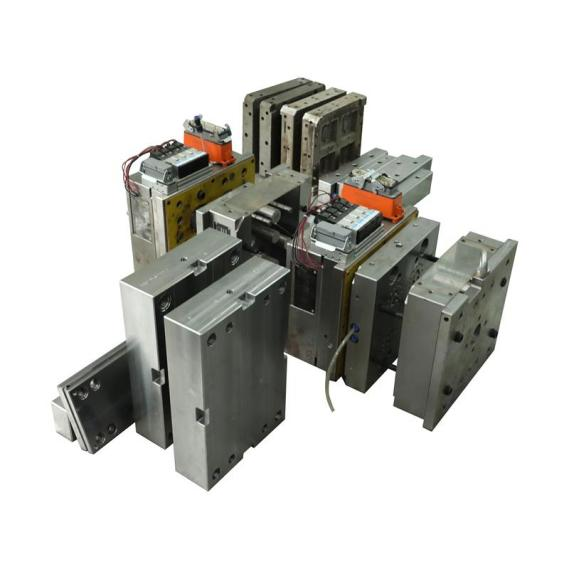By Andy from Baiyear factory
Upated 31th of October, 2022
Accept the assignment
The task book for forming plastic parts is usually proposed by the part designer, and its contents are as follows:
1. The formal drawings of the parts that have been approved and signed, and indicate the grade and transparency of the plastic used.
2. Instructions or technical requirements for plastic parts.
3. Production output.
4. Samples of plastic parts.
Usually, the mold design task book is proposed by the plastic part craftsman according to the task book of the molding plastic part, and the mold designer designs the mold based on the task book of the molding plastic part and the mold design task book.
Collect, analyze and digest original data
Collect and sort out relevant parts design, molding process, molding equipment, machining and special processing data for use in designing molds.
1. Digest the drawings of plastic parts, understand the use of the parts, and analyze the technical requirements such as the craftsmanship and dimensional accuracy of the plastic parts. For example, what are the requirements for plastic parts in terms of appearance, color transparency, and performance, whether the geometric structure, slope, and inserts of plastic parts are reasonable, the allowable degree of welding lines, shrinkage holes and other forming defects, whether there is coating Assembly, electroplating, gluing, drilling and other post-processing. Select the dimension with the highest dimensional accuracy of the plastic part for analysis to see if the estimated molding tolerance is lower than the tolerance of the plastic part, and whether the plastic part that meets the requirements can be formed. In addition, it is necessary to understand the plasticization and molding process parameters of plastics.
2. Digest the process data and analyze whether the requirements for the molding method, equipment model, material specification, mold structure type, etc. proposed in the process task book are appropriate and whether they can be implemented.
The molding material should meet the strength requirements of plastic parts, and have good fluidity, uniformity, isotropy, and thermal stability. According to the purpose of the plastic part, the molding material should meet the requirements of dyeing, metallizing conditions, decorative properties, necessary elasticity and plasticity, transparency or opposite reflection properties, adhesiveness or weldability.
3. Determine the molding method
Use direct pressure method, casting method or injection method.
4. Select molding equipment
Molds are made according to the type of molding equipment, so it is necessary to be familiar with the performance, specifications, and characteristics of various molding equipment. For example, for an injection machine, the following should be known in terms of specifications: injection capacity, clamping pressure, injection pressure, mold installation size, ejector device and size, nozzle hole diameter and nozzle spherical radius, gate sleeve positioning ring size, The maximum and minimum thickness of the mold, the template stroke, etc., see the relevant parameters for details.
It is necessary to preliminarily estimate the dimensions of the mold and determine whether the mold can be installed and used on the selected injection machine.


Specific structure plan
(1) Determine the type of mold
Such as pressing molds (open, semi-closed, closed), casting molds, injection molds, etc.
(2) Determine the main structure of the mold type
The selection of the ideal mold structure is to determine the necessary molding equipment, the ideal number of cavities, and under absolutely reliable conditions, the work of the mold itself can meet the requirements of the process technology and production economy of the plastic part. The technical requirements for plastic parts are to ensure the geometry, surface finish and dimensional accuracy of the plastic parts. The economic requirement of production is to make the cost of plastic parts low, the production efficiency high, the mold can work continuously, the service life is long, and labor is saved.
There are many factors affecting the mold structure and individual mold systems, which are very complicated:
1. Cavity layout. Determine the number of cavities and their arrangement according to the geometrical characteristics of plastic parts, dimensional accuracy requirements, batch size, mold manufacturing difficulty, and mold cost.
For injection molds, the precision of plastic parts is grade 3 and grade 3a, the weight is 5 grams, the hardening gating system is used, and the number of cavities is 4-6; the plastic parts are general precision (grade 4-5), forming The material is partially crystalline material, and the number of cavities can be 16-20; the weight of plastic parts is 12-16 grams, and the number of cavities is 8-12; and the plastic parts weighing 50-100 grams, the number of cavities can be selected 4-8. For amorphous plastic parts, the recommended number of cavities is 24-48, 16-32 and 6-10. When the weight of plastic parts continues to increase, multi-cavity molds are rarely used. For plastic parts with grades 7-9, the maximum number of cavities is increased by 50% compared to the plastics with grades 4-5 indicated.
2. Determine the parting surface. The position of the parting surface should be conducive to mold processing, exhaust, demoulding and molding operations, and the surface quality of plastic parts.
3. Determine the gating system (shape, position and size of the main runner, sub-runner and gate) and exhaust system (exhaust method, location and size of the exhaust groove).
4. Select the ejection method (ejector rod, ejector tube, push plate, combined ejector), and determine the undercut treatment method and core pulling method.
5. Determine the cooling and heating method, the shape and position of the heating and cooling groove, and the installation position of the heating element.
6. According to the mold material, strength calculation or empirical data, determine the thickness and overall dimensions of the mold parts, the shape structure and the positions of all connections, positioning and guide parts.
7. Determine the structural form of the main molding parts and structural parts.
8. Considering the strength of each part of the mold, calculate the working size of the molded part.
If the above problems are solved, the structural form of the mold will be solved naturally. At this time, you should start to draw the mold structure sketch to prepare for the formal drawing.
Fourth, draw the mold map
It is required to draw according to the national drawing standard, but it is also required to combine the factory standard and the factory custom drawing method not stipulated by the country.
Before drawing the general assembly drawing of the mold, the process drawing should be drawn, and the requirements of the part drawing and process data should be met. The size guaranteed by the next process should be marked with the words “process size” on the drawing. If no other machining is performed after forming except for repairing burrs, the process drawing is exactly the same as the part drawing.
It is best to mark the part number, name, material, material shrinkage rate, drawing scale, etc. below the process diagram. Usually, the process is drawn on the mold assembly drawing.
1. Draw the general assembly structure diagram
The general assembly drawing should be drawn in a ratio of 1:1 as far as possible, starting from the cavity, and drawing the main view and other views at the same time.
Five, the mold assembly drawing should include the following:
1. Mold forming part structure
2. Structural form of pouring system and exhaust system.
3. Parting surface and parting pick-up method.
4. The shape structure and all the connecting parts, the positioning and the position of the guiding parts.
5. Mark the cavity height size (not required, as needed) and the overall size of the mold.
6. Auxiliary tools (removing mold removal tools, calibration tools, etc.).
7. List all the part numbers in sequence and fill in the detailed list.
8. Mark the technical requirements and instructions for use.
If you want to know more about the mold design and production process, please feel free to contact me, I will do my best to answer you, and I will definitely satisfy you.
Contact:Andy Yang
What’s app : +86 13968705428
Email: Andy@baidasy.com
Post time: Nov-29-2022






